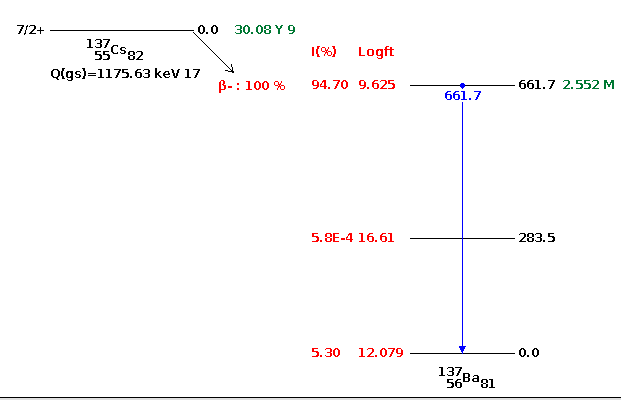Radiation detectors are amazingly sensitive
By Nick Touran, Ph.D., P.E., 2023-07-22 , Reading time: 2 minutes
Radiation detection equipment, such as Geiger counters, can detect the radiation emitted from a single atom decaying. They generally count how rapidly such energetic rays or particles are entering the detector and give an estimate on the gauge of the dose rate, which is proportional to the hazard to health. High dose rate (lots of radiation per second) is bad, low dose rate (near or below the natural background level) not so much.
Radiation has identifiable fingerprints
More sophisticated equipment, such as scintillator and high-purity germanium detectors can both count each energetic ray coming in while also measuring its energy. Since atomic nuclei exist in quantized energy levels, the energy of emitted radiation from any given nucleus is always the same. For example, a Cesium-137 nucleus always emits gamma rays that have an energy of 661.7 keV. So if you detect even one 661.7 keV gamma ray, you know that one atom of Cs-137 just decayed.

The crazy thing here is that we can detect absolutely trace amounts of Cs-137 (or any other nuclide) even if if it is contributing a thousandth or even less of the natural background radiation.
Measurable doesn’t always imply dangerous
This shockingly sensitive detection capability can lead to undue confusion and fear in headlines. Whenever anything radioactive at any concentration is released to the environment, it is measurable, and big headlines ensue.
It is measurable if the dose rate is 1/1000th of the natural background dose (and therefore utterly harmless) and it is measurable if the dose rate is 1000x the natural background (and therefore hazardous indeed). Headlines that say that radiation is being detected without offering an indication of dose rate are meaningless.
Radiation dose rate numbers are a bit obscure and confusing. We have a tool to help understand and contextualize them by comparing them to the natural background dose rate.
In many cases, leaks well below the hazardous level make major headlines. Sometimes one must wonder if news organizations tend to capitalize on fear to get more views rather than provide appropriate analysis and context.
Always ask for the dose rate
If you are ever hearing about radiation somewhere with an implication of hazard, seek information about the dose rate. If it’s near or below background levels, don’t worry too much. If it’s 10x, that may be a concern. If it’s 1000x background, seek shelter immediately.